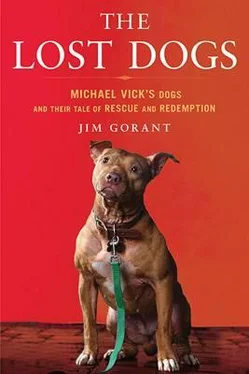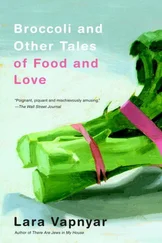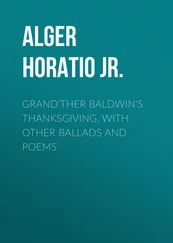After two years, Stirling was burned out, so she left to manage a doggie day care, moving from the world of injured and forgotten animals to the universe of pampered pets. It was an interesting contrast, but one Catalina did not study long; a year later she and Davor relocated to San Francisco. In California, Stirling started her own dog-walking and pet-sitting business. Every day it was just her and seven or eight dogs. As if that wasn’t enough canine time, she also began volunteering with a rescue group. The doggy-filled hours were wonderful, but three years later she became pregnant, and she and Davor decided to move back East to be close to family.
They packed their four dogs in the car and drove across the country. When motherhood arrived, in the form of a son, Nino, it was gratifying and lovely, but it did not quell Catalina’s drive to work with dogs. She began volunteering in the Baltimore City Shelter. There, she met the people who ran a rescue group called Recycled Love, and she began working with them, too.
Over ten years of caring for animals, she had been involved with hundreds of dogs and had developed a special keenness for taking on the hardest cases. For a time she had a German shepherd with aggression issues and she spent a lot time studying what caused such problems and how to alleviate them. She had nursed several scared and shut-down dogs back to a state of stability and happiness. She had seen a lot, although she had never seen anything as bad as Jasmine.

There was a room in Catalina’s basement, finished and tidy with a big window that let in a lot of sunlight. She painted it a calming blue color and set a roomy dog crate on the floor. She filled the crate with soft blankets and a toy or two. Then she placed Jasmine inside, the way one might place a vase on a table or a clock on the mantel.
The dog would not walk into the crate on her own, and she hardly moved once she was inside. She simply lay in one spot and stared out at the world around her, stared at Stirling. It didn’t matter if Catalina left the door open or closed, stayed or left, brought the other dogs in or kept them away. Jasmine stayed put-not flinching, not stretching, not even, it seemed, blinking.
For the first few days the dog would not drink or eat, at all. Finally, Stirling simply left bowls of food and water just outside the crate and left the room, closing the door behind her. Only then would Jasmine inch out of her vault and partake.
Four or five times a day, Stirling picked Jasmine up and carried her outside. As always, the dog went rigid at the touch, and Catalina hauled her like a FedEx delivery to the yard. She put Jasmine down on the grass, and the dog lay motionless, staring at her. Only after Stirling backed away, went inside, and closed the door would Jasmine get up and relieve herself. Then she would skulk across the yard to a hole in the ground she’d found. She would crawl down into the hole and resume her frozen vigil, staring out at the world around her like a statue.
When she was not outside, she spent almost all her time in the crate. Although the door was almost always left open, Jasmine never ventured out. Whenever Stirling came in, the dog would stare at her with an intensity that was unnerving. Anywhere Catalina went in the room, anything she did, Jasmine fixed her with a steady gaze. There was nothing threatening about it-as always the dog kept her head down-but it was inescapable and unchanging.
In the evenings, Catalina would go into the room, put on a soft light, play soothing music, and simply sit near the crate. She was hoping to help Jasmine decompress and relax and to start forming a bond. She would offer treats and toys, but as always Jasmine was unmoved. If Catalina tried to pet Jasmine, the dog would tremble. Jasmine just stared. Every time Stirling looked over, all she saw were those eyes, and she came to think of the dog as two brown circles boring into her. When Jasmine stared like that her ears were perked up, and the bent one asked, what, when, why?
Catalina was beginning to have some questions of her own. Perhaps it came from all the years working with dogs, but she had developed an inner sense, an almost animal instinct, that she followed unerringly. When she had first gone to see Jasmine at WARL, she had not analyzed the prospect of taking the dog. She hadn’t weighed the potential impact on her family or what the odds of actually helping the dog might be. She simply felt it. Deep within her she felt that she wanted to help. She needed to help. And she had gone with that feeling.
Now, though, the first shades of doubt occasionally flashed through her mind. Had she been wrong? The stakes were high. Just because many of the Vick dogs were in foster homes, it didn’t mean they were home free. Each dog was officially undergoing a six-month period of observation, and it was still a possibility that any dog could be deemed dangerous or mentally unstable to the point that its status might change. The powers that be could determine that any given dog might have to be moved from a home to a sanctuary or might even have to be euthanized. Already, BAD RAP had voluntarily sent one dog, Mya, to Best Friends because she proved too damaged for the outside world.
Catalina was determined to keep anything like that from happening to Jasmine, but she knew that if the dog continued to struggle, hard questions would follow. She never had any illusions that it would be easy, that it would be anything but a long, difficult process requiring patience and will, but it had been four weeks and the dog was still lost in the woods of southern Virginia. Catalina did not know if Jasmine would ever make it out of there.

Despite the lack of progress, Stirling continued to follow her instincts. She may have wondered if Jasmine would ever reach the hoped-for state of recovery, but she never questioned her decision to take Jasmine in.
Catalina considered what she had to work with. The one thing that had any noticeable effect on Jasmine were the other dogs. By now, Catalina was certain it was safe to let Jasmine mingle with her other pets. She’d observed them together many times and she could sense that Jasmine would not attempt to harm them. She could see that Jasmine needed other dogs. Jasmine had grown up in a world of animals and she felt safer and more comfortable among her own kind.
By following her instincts Catalina was about to tap into a very powerful influence of dog behavior, the pack instinct. Canine motivations can be broken into a few key areas: survival, food, and companionship. Survival includes the drive to find shelter, procreate, and defend oneself, which comes in the form of fight-or-flight instincts. In that regard, Jasmine had established her crate as a den and since she had been spayed there was no procreative drive. In the fight-or-flight equation she’d clearly given up the fight and that was not a bad thing; it was the constant state of flight or withdrawal that had to be undone. The food drive includes not just eating, but any behavior associated with hunting or gathering food, and while Jasmine did consistently eat, she wouldn’t come out of her crate when someone was around and she never displayed the sort of tracking and chasing behavior associated with hunting, which indicated that she was not very deeply moved by those instincts. The companionship drive reflects the need dogs have to integrate themselves into a social order, the pack. Catalina could see that this instinct was still strong in Jasmine.
In the yard with Rogue, Sophie, and Reymundo, Jasmine continued to show her only signs of life. She interacted with them, sniffing and walking and occasionally rubbing up against them. Moreover, she looked like a different dog during these times. She was more relaxed and comfortable and seemed almost normal.
Читать дальше














